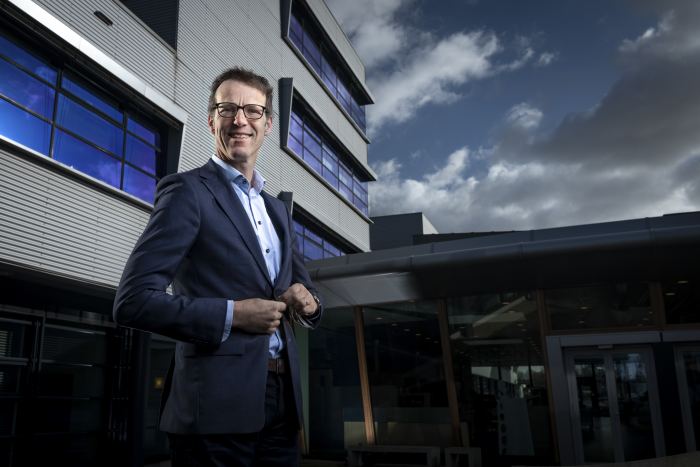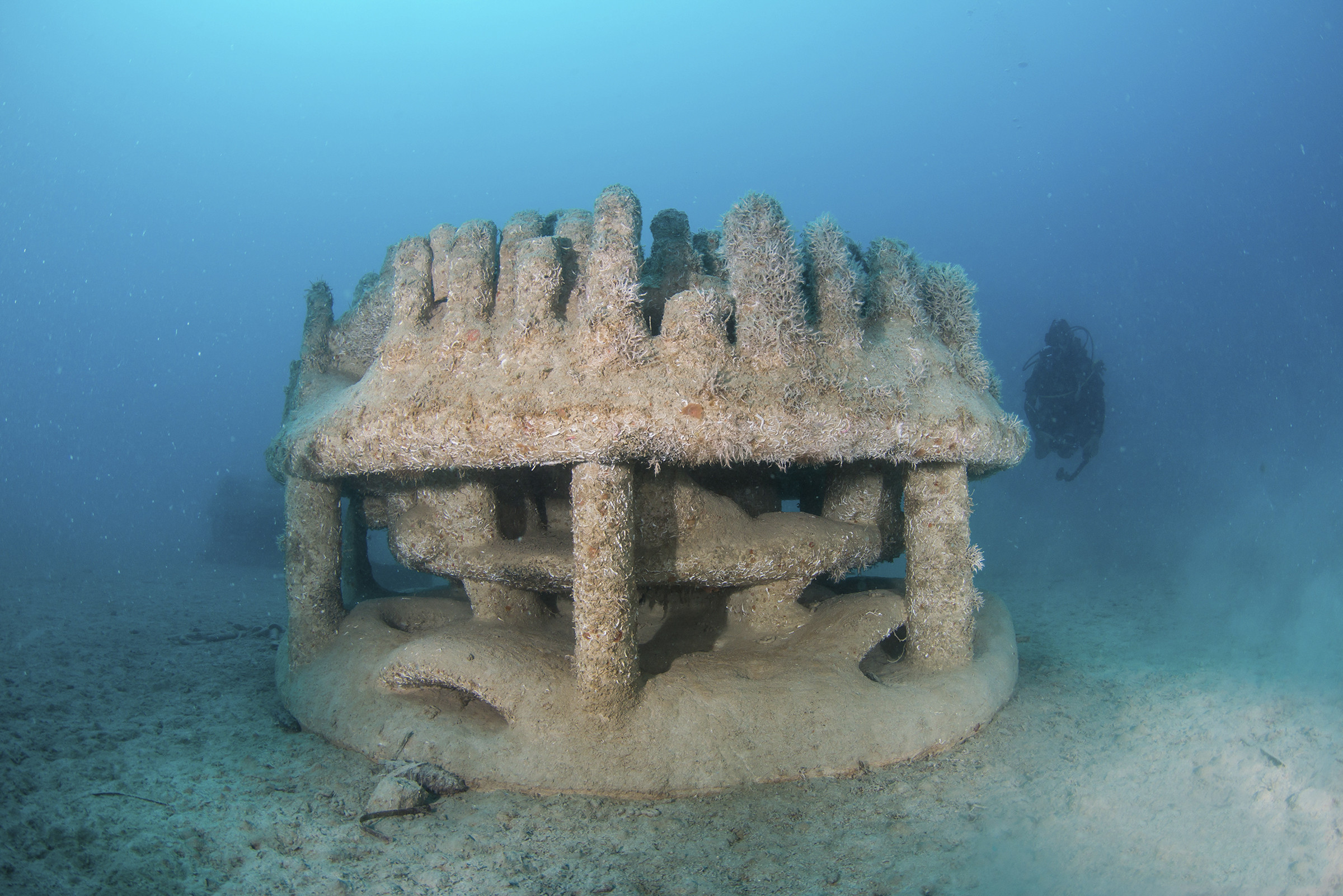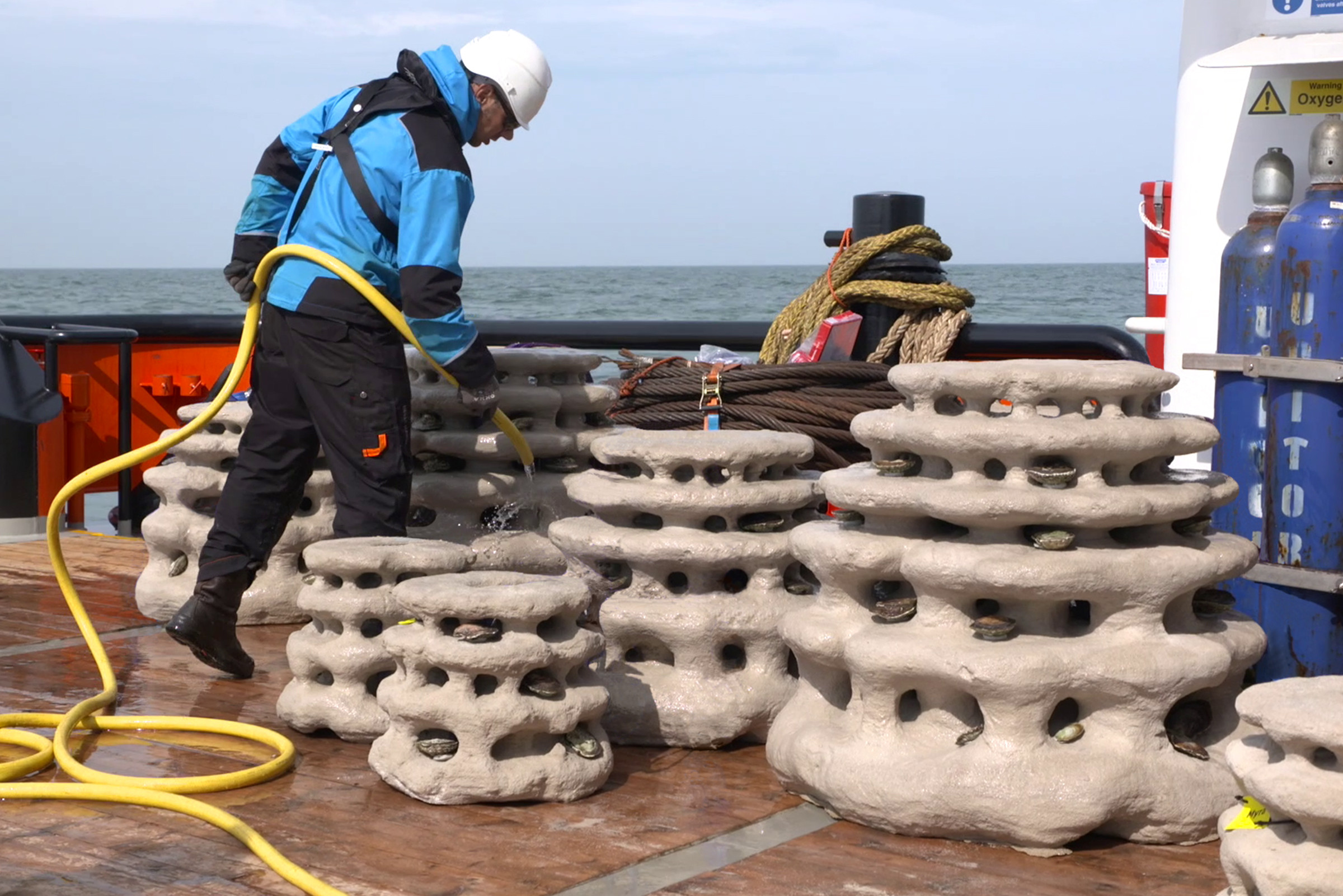Artificial coral and oyster reefs, the transplantation of coral, mangrove and seagrass, the creation of new land with ‘unsuitable’ fine-grained sediment: Boskalis is continuing to develop innovations focusing on sustainability and ecology. Sander Steenbrink, General Manager Research & Development, talks about successful projects and promising pilots. What drives Boskalis? And how does this philosophy fit in with the other activities?
How do innovations in the field of ecology fit in with the Boskalis vision?
“Sustainability and ecology play an important role in all Boskalis activities. We try to reduce our carbon footprint and protect local ecosystems on every project. We use the Sustainable Development Goals of the United Nations to guide us. The UN goals are designed to preserve the world for future generations and, here at Boskalis, we want to make a meaningful contribution. We have developed numerous innovative applications, for example in the field of Building with Nature and Building with Soft Materials, but also for transplanting coral and seagrass. We are continuing to look for creative ways of establishing the conditions where nature can do its job. That often cuts both ways because many ecological innovations allow us to execute projects that wouldn’t be possible otherwise: government agencies will grant permits only for projects if environmental risks are properly mitigated or accounted for, and clients will be able to get funding for projects if they meet certain sustainability requirements. If we can develop an alternative approach for a potential client that is sustainable, we create a win-win situation.”

Sander Steenbrink, General Manager Research & Development.
What is the role of the R&D department in innovation at Boskalis?
“Our main goal is to channel the ideas developed by numerous colleagues in our company. They can be innovations in all kinds of areas, ranging from technology or logistics to ecological and organizational innovations. Our R&D colleagues come from an extremely wide range of backgrounds. In addition, we work closely with numerous other Boskalis departments, such as the design specialists from Hydronamic: engineers specializing in subjects such as geology, morphology, hydrology and ecology. Our department also regularly organizes Innovation Challenges in which the entire company participates enthusiastically.”
How large is the share of ecological innovations in the R&D activities of Boskalis as a whole?
“We are seeing rising demand for solutions to environmental and climate change challenges, and of course we are responding. As well as research into purely technical innovations such as new equipment, smart systems and improvements to our fleet, I would estimate that a quarter of our R&D efforts target ecology. Not including our efforts to reduce emissions. Our colleagues from the Dredging, Offshore Energy and Salvage divisions work every day on acquiring and executing all our projects, and so they focus primarily on the short and medium terms. As an R&D department, we want to keep ahead of the curve. We try to work out what the future will be and anticipate accordingly. The extensive expertise of Boskalis gives us an edge over the competition in some respects but we also want to maintain our leading position in the future. You need to make a long-term commitment to eco-innovations like Building with Nature projects. It takes a lot of time to develop new ways of working and to find out how effective they are. An example is the ReefVival project. We produced six artificial reefs from Mediterranean sand on a large 3D printer three years ago and then installed them on the seabed in the Larvotto nature reserve offshore Monaco. It’s only now that we can begin to see what effect that operation has had.”
ReefVival
What can you tell us about the results of the ReefVival project?
“Scientists from the University of Nice have conducted habitat studies in recent years. They looked at the behavior of the fish and crustaceans, and monitored the colonization of the 3D-printed reefs by taking samples of the growth of algae, bacteria and other organisms. One of the researchers, Elisabeth Riera, actually received her PhD for her study of this subject recently. She compared the development of the reefs with other artificial and natural reefs in the Larvotto reserve and concluded that the six ReefVival modules have all been success stories. They are now almost completely overgrown and inhabited by a variety of species of fish, lobsters and sea cucumbers, just as we had hoped. These 3D-printed reefs clearly show that, with a little human help, reefs can recover.”
“The project is a joint initiative involving Boskalis, the Prince Albert II Foundation of Monaco and the Monaco Association for Nature Preservation (AMPN). One of our motives was that we wanted to show we can build artificial, coral-reef-like structures. Coral reefs are structures built from calcium carbonate that are a vital source of life for a range of ecosystems. Global warming, among other things, represents a serious threat to the coral, and therefore countless plant, algae and animal species that depend on it. This problem is also an issue offshore Monaco. In the pilot project, the AMPN wants to investigate whether artificial reefs can contribute to better ecological conditions.”



The 3D-printed reefs are made of material obtained locally. Why is that important?
“We live in a time in which, for all sorts of reasons, the substrate on which the flora and fauna of the reef depend is being lost or is even completely absent. The substrate is the structure on which marine life, such as coral and algae, can settle and grow, and which can then shelter lobsters, crabs and fish. If you want to build an artificial reef, you should preferably do so with local, natural material. In the vast majority of cases, this is sand - and it should come as no surprise: sand and water are precisely where we excel! To make the reefs, we really only needed to add binder and a design approach. Following on from this project, we also used the 3D printer to produce modules for oyster reefs in the North Sea. The challenge was to provide the oysters with enough habitat to reproduce. So we opted for a local substrate that algae and other marine life can settle on without slipping off. The results are promising.”
THESE 3D-PRINTED REEFS CLEARLY SHOW THAT, WITH A LITTLE HUMAN HELP, REEFS CAN RECOVER.
What other options are there for the creation of artificial reefs?
“Experiments are also ongoing with substrates such as glass and steel. In Monaco, the AMPN is investigating how these different substrates work exactly. And we are collaborating with the University of Wageningen on tests to cast modular concrete molds. A concrete reef can be produced less expensively than a reef of sand and so it is more suitable for large-scale projects. However, the pH value of concrete is high and that has a detrimental effect on coral growth. Another drawback is that a lot of CO2 is released during the production of concrete. It’s important for us to continue looking for the best approach. Reefs not only help to preserve ecosystems, they also make an important contribution to coastal protection. Reefs break the waves below the water and dampen the wave energy arriving at the coastline, slowing down coastal erosion. That effect is another important reason for us to continue our research in this area.”
Are there any firm plans for the construction of artificial reefs?
“There certainly are. We expect to execute a pilot project soon in the tropical waters on the east coast of Africa in collaboration with Wageningen University. A lot of coral was lost at this location due to overfishing. The pilot project will look at whether the ecosystem can be restored using the stackable modules developed by the university, together with a designer. The main question is whether the modules can act as nurseries for the fish so that the fish stocks in these waters can be preserved at the same level in the future. Incidentally, the loss of fish breeding grounds is not only a problem in tropical regions; it also affects the North Sea. Fishing, shipping and energy companies all have their own - sometimes conflicting - interests. To protect the ecology of the North Sea, it is important to look for overarching solutions. We are thinking about how the knowledge, experience and equipment of Boskalis can make a difference here. One of the ideas is to install artificial bed structures in the wind farms in the North Sea. Fish can grow peacefully there and then be caught outside the wind farms. Boskalis has enough expertise and equipment at its disposal to implement this type of solution and, in that way, to strengthen the ecosystem.”
Coral and seagrass
Just to come back for a moment to the development of a sustainable approach to projects that wouldn’t be possible otherwise: can you give a few examples?
“There was a dredging project that we completed a few years ago in a coral-rich area off the coast of Jamaica. We obtained a permit for that project thanks to the fact that we developed an innovative method to transplant the coral in collaboration with coral experts. That operation was a success. Almost all the flora and fauna on the coral survived the move as well, and we were able to execute the project safely and sustainably.”
“Another interesting innovation is the Seagrass Transplanter. This is a tool we developed for a project in the Mediterranean, where a pipeline is being installed in an area rich in seagrass. Seagrass grows at a depth of ten to fifteen meters. It is a fragile, slow-growing plant that creates a habitat for many other species (i.e. fish, shrimps and crabs and mollusks). It dampens waves, stabilizes the seabed, and is also one of the most important natural marine systems for capturing and storing carbon dioxide. Seagrasses are one of the most rapidly declining ecosystems on earth. We are losing seagrass habitat at a rate of 7% per year. About a quarter of the world’s seagrass has already disappeared over the last 30 years, and seagrass is now a protected ecosystem in many of the world’s regions. Scientists from all over the world are studying ways of moving it. Divers are sometimes used but a manual approach like that is not efficient on a large scale. On the Mediterranean project, the pipeline can be installed only if it can be proven that there will be no damage to the seagrass. In order to execute this type of projects, we developed the Seagrass Transplanter. It’s a special grab that is fitted on an excavator so that we can safely pick up and move a large section of the seabed fifty centimeters thick, including the roots and the seagrass itself, which is fifty centimeters tall.”
Mudbot
Finally: you talked about Building with Soft Materials earlier in this interview. Can you elaborate?
“That means transforming material that was previously considered unsuitable, such as fine sand, silt and mud into usable construction material. There may be different reasons why that can be useful. On a recent nature project in the Netherlands, the construction of the Marker Wadden, we removed fine-grained silt from the bottom of the Markermeer lake and used it to build five islands. The removal of silt from the bed led to the ecological recovery of the bed and improved water quality. The islands consist of ring dikes of sand in which we deposited the sediment. A more important reason for building with silt is the fact that less and less sand is available worldwide, for example in Singapore, as a building material. With this in mind, we are looking for ways to make fine sediment suitable as a building material. One of our recent innovations, the Mudbot (a Mud roBot), was developed for this purpose. It is a machine that allows us to dry fine sediment faster, making it stronger and more useful in practice. We create a land fill with the muddy material and then the Mudbot drives over it completely autonomously. The machine creates ditches and gullies so that the material dries faster as the water evaporates. The resulting material can be used in multiple construction applications. Given the current price level of sand and its increasingly limited availability, we think this is a very promising innovation. As an R&D department, we are constantly working on developing smart applications of this kind.”